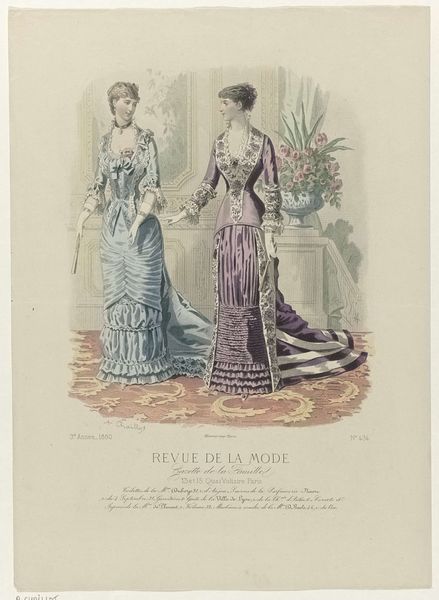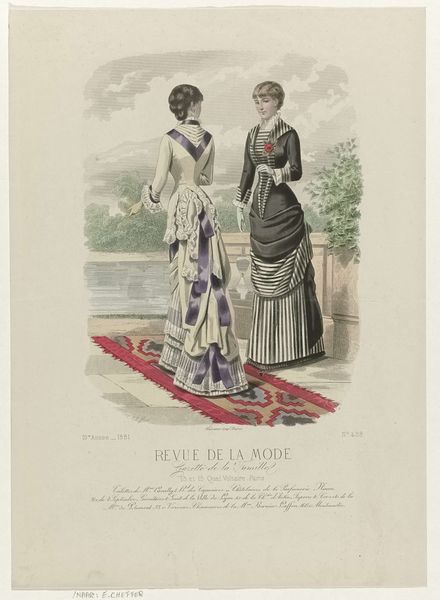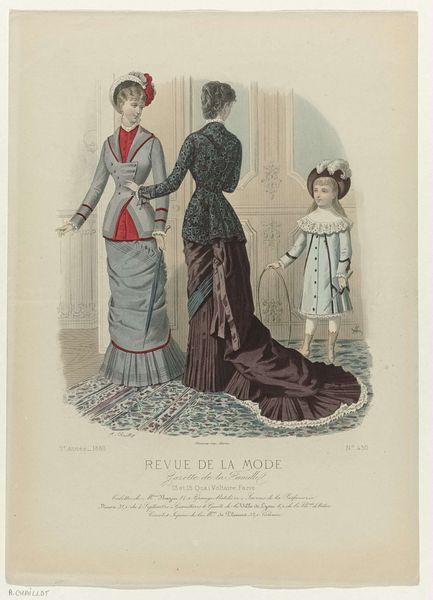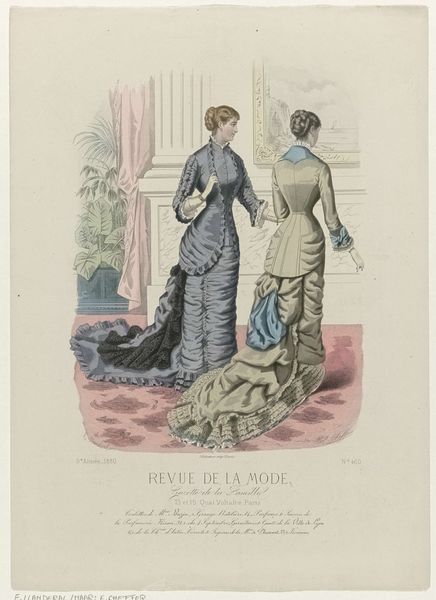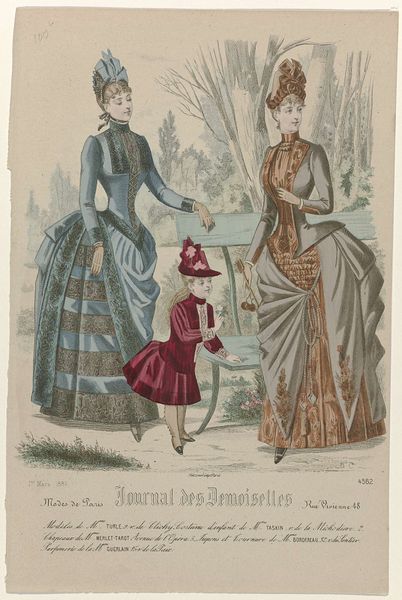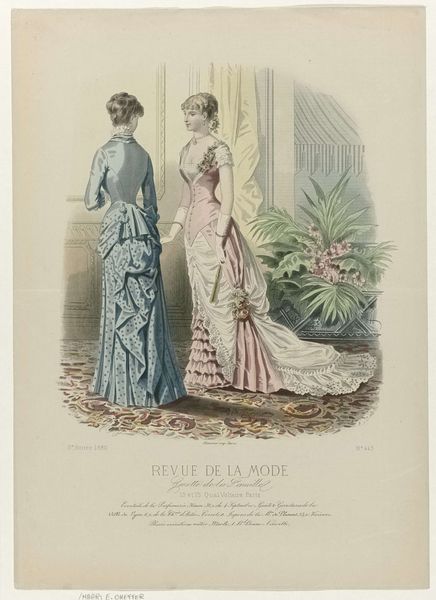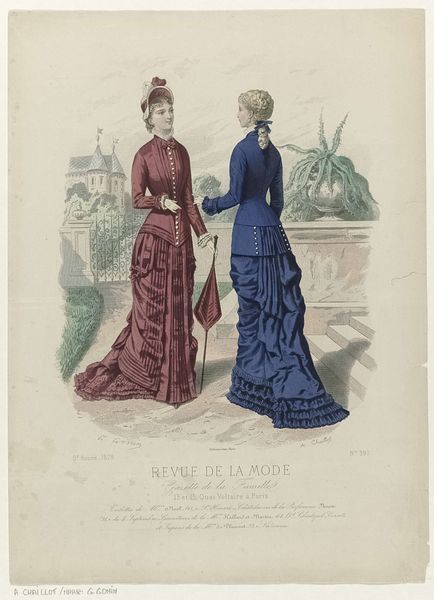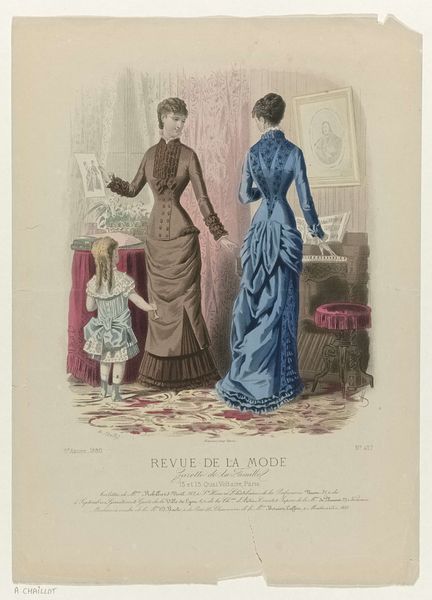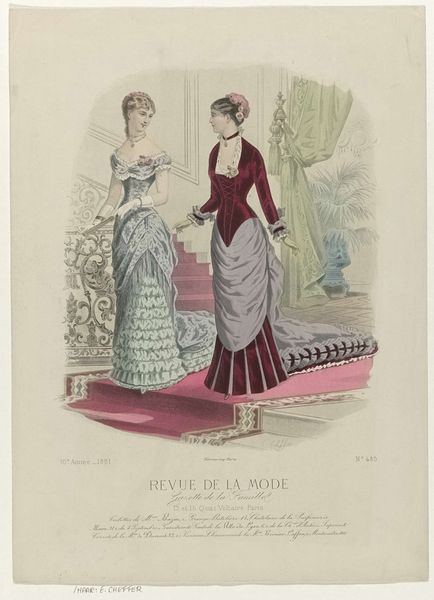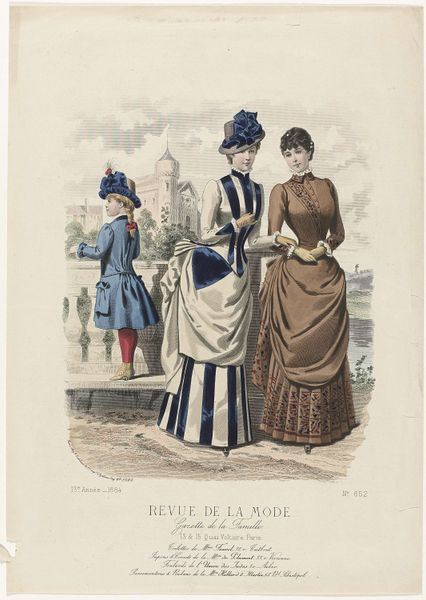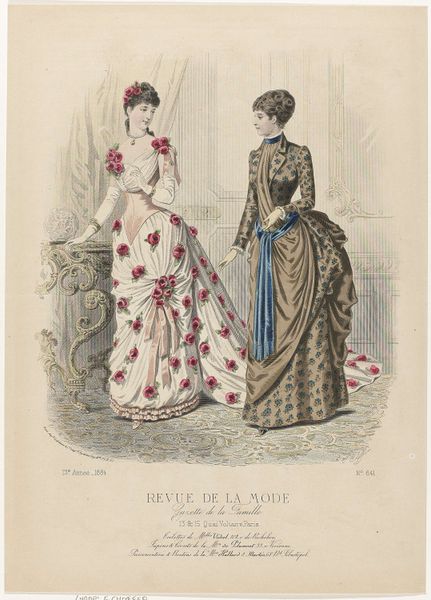
Revue de la Mode, Gazette de la Famille, 1880, 9e année, No. 440: Toilettes de M.mes Bardé soeurs (...) 1880
0:00
0:00
drawing, print, paper, watercolor, ink
#
portrait
#
drawing
# print
#
impressionism
#
dog
#
figuration
#
paper
#
watercolor
#
historical fashion
#
ink
#
watercolour illustration
#
decorative-art
#
dress
Dimensions: height 372 mm, width 272 mm
Copyright: Rijks Museum: Open Domain
Curator: Immediately I’m struck by the artifice of this scene, the staged nature of fashion and femininity. It feels so constructed. Editor: And what a feast of materiality it is! We’re looking at a print titled "Revue de la Mode, Gazette de la Famille…" created by A. Chaillot in 1880. It showcases two women adorned in the height of fashion. Curator: Right. "Fashion." Let's talk about the labor involved in crafting those elaborate gowns, the underpaid seamstresses toiling away in sweatshops. Editor: Precisely. We should acknowledge that the glossy image conceals the often exploitative production process of fashion in the 19th century, and more broadly, we might read into how material wealth gets presented, performed and seen. What statements did women try to communicate through dress in 1880? Curator: Also, look at the textures! The paper itself, the watercolor washes, the precise ink lines forming these dresses. Consider how each layer contributes to the final image and its function within this periodical. Editor: Good point. The juxtaposition of the airy pink ruffles against the structured, almost severe lines of the violet gown – it’s fascinating! The one dog almost provides a critical comedic relief and counterpoint to these lavish costumes. This dog looks so playful. Curator: It does humanize the scene a little, doesn’t it? We can read into the fashion itself and wonder: were these materials locally produced, or were they being shipped to Europe from other parts of the world? These dresses reflect global trade patterns as much as local styles. Editor: The image presents an interesting view of female identity. In that era, fashion served as a signifier of social status, but also constraint, with women navigating a rigid set of expectations within patriarchal norms. This image doesn’t escape from those notions. Curator: Yet within those confines, these women actively engage with material culture. Their consumption is a form of agency, even if limited by social structures. This print itself becomes a commodity, fueling desires and aspirations. Editor: Seeing the historical and socio-political framework for these artifacts has shifted the tone slightly. It provides a deeper layer than only appreciating the design work. Curator: Definitely. We started by critiquing the surface presentation of wealth and consumption and got to appreciating the labor. Editor: Yes. What began as a first impression transformed into understanding historical production.
Comments
No comments
Be the first to comment and join the conversation on the ultimate creative platform.
